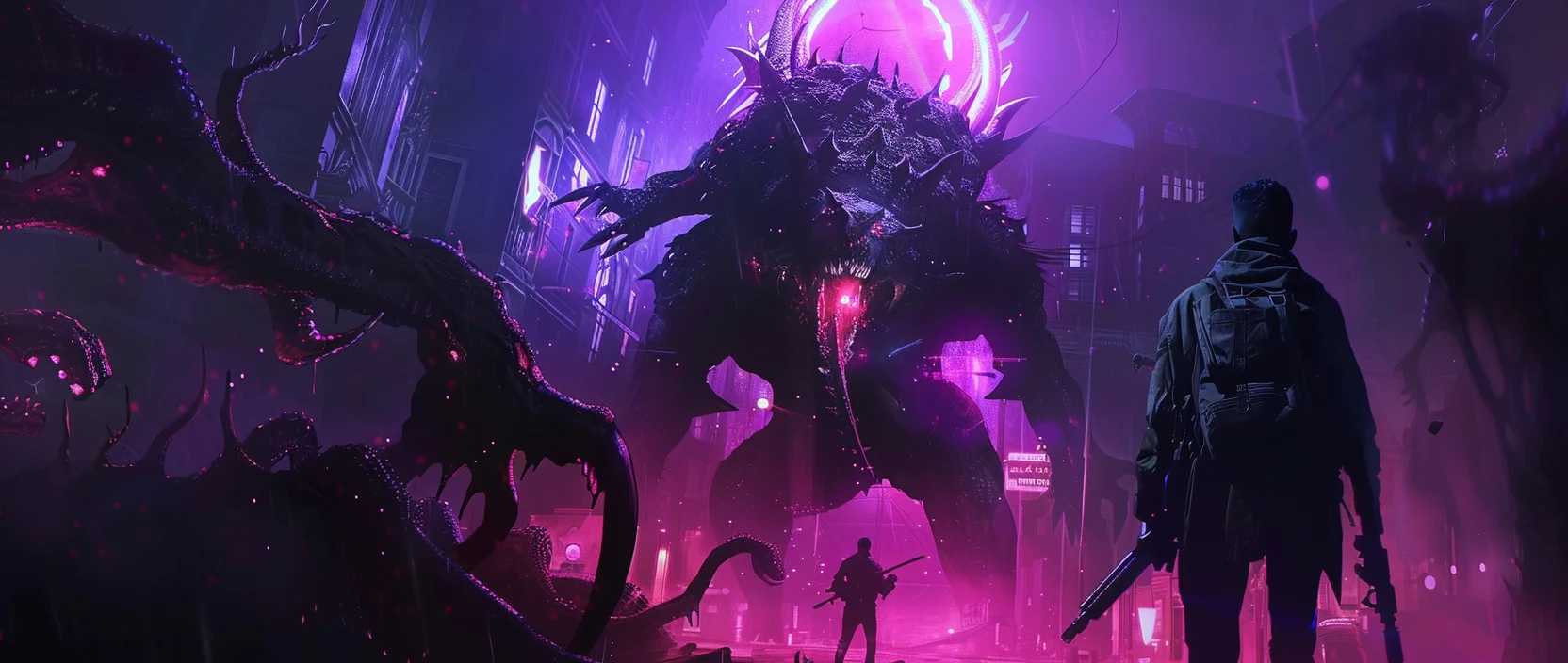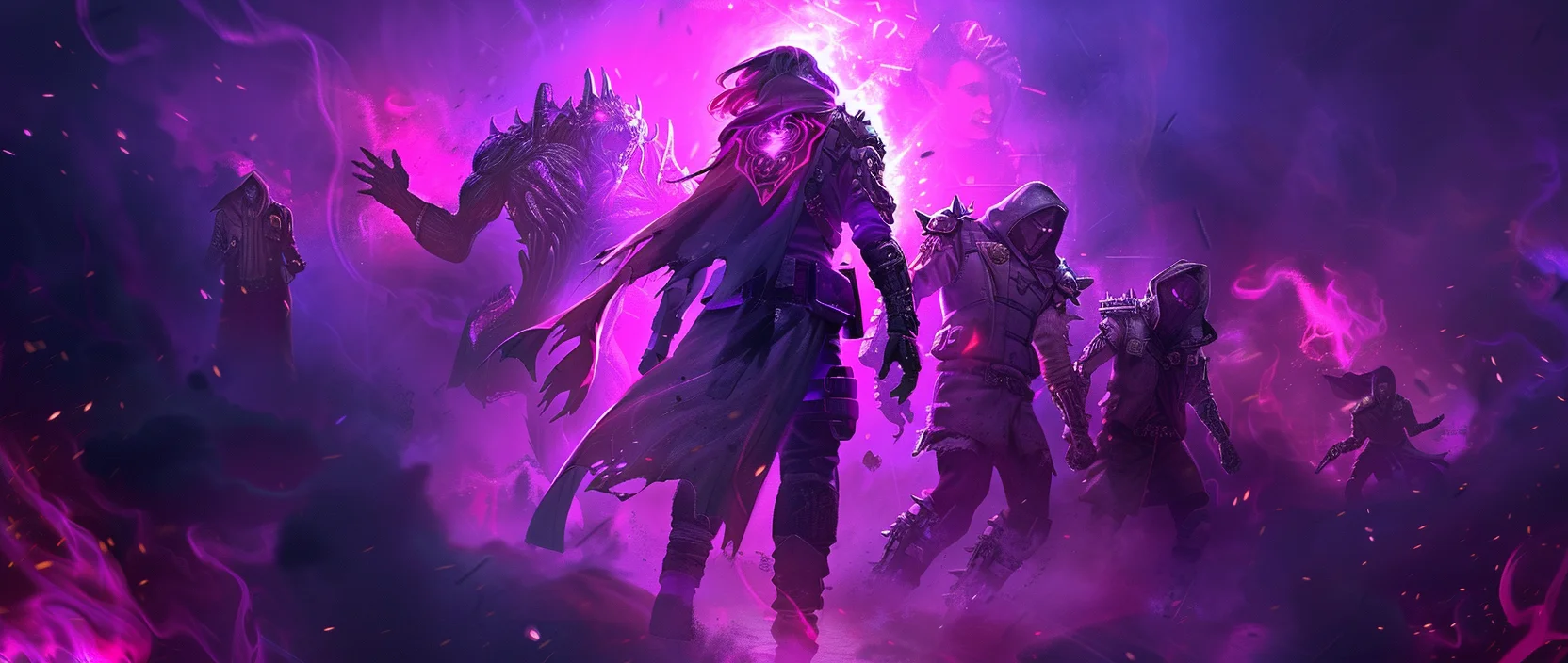Loot Survivor is an innovative blockchain game built on the Loot ecosystem and StarkNet, combining roguelike mechanics with the transparency and opportunities of Web3. The project focuses on exploring a procedurally generated world, where every session becomes a unique challenge. Players must control their character, fight monsters, collect rare items, and make decisions that affect survival. At its core, the game emphasizes decentralization and a tokenized economy, turning classic gameplay into a practical example of blockchain application in the gaming industry.
Contents
- Game Concept and Loot Survivor World
- Blockchain Technology and Architecture
- Economy, NFTs, and In-Game Assets
- Community, Collaborations, and Development
- Conclusion

1. Game Concept and Loot Survivor World
Loot Survivor is designed as a roguelike game with procedurally generated maps, making each playthrough unique. Players start with a basic character, equipped with minimal gear, and must explore dungeons, fight enemies, and gather resources. The main feature is the high level of unpredictability: random events, unexpected encounters, and changing conditions create a constant sense of risk.
The core gameplay revolves around balancing between aggression and caution. Players must decide when to take risks for valuable items and when to retreat to ensure survival. Defeat leads to the loss of progress, making every decision significant.
The game adopts the aesthetics of classic RPGs with a minimalist approach, where mechanics and in-game choices matter more than visuals. However, Loot Survivor also builds a complex ecosystem where every item can have real value through tokenization.
Additionally, the game encourages experimentation: different combinations of equipment unlock new strategies. This motivates players to try unique tactics and share their experiences with the community. Over time, an internal meta evolves where players compete not only against the system but also against each other, making each dive into the game meaningful and exciting.
2. Blockchain Technology and Architecture
Loot Survivor is powered by StarkNet, a Layer-2 zk-rollup solution that ensures scalability and security. This choice of technology enables numerous in-game transactions at low cost and with fast confirmation times.
Key Technical Features:
- Scalability: StarkNet supports thousands of transactions per second, allowing for a dynamic gaming experience.
- Transparency: All events are recorded on-chain, preventing manipulation by developers.
- Smart Contracts: Enforce game rules and manage assets without intermediaries.
- Loot Integration: Direct connection with the Loot ecosystem enables deeper integration and collaborations.
This technological foundation combines decentralization principles with the convenience of modern gaming. For players, it means trust in the system and verifiable actions at every step.
Using StarkNet also opens integration opportunities with other dApps, enabling cross-platform interactions and simplifying new feature implementation. zk-proofs provide enhanced security while removing the need to fully trust third-party services. As a result, the game not only entertains but also showcases the potential of Layer-2 solutions.
3. Economy, NFTs, and In-Game Assets
Loot Survivor builds its game economy around NFT items and tokenized resources. All player discoveries are unique digital assets that can be freely traded or used within the game. This approach adds real-world value to progress and fosters community engagement.
Main Economic Elements:
| Element | Description |
|---|---|
| Equipment | Unique NFT items that enhance characters and can be sold on marketplaces. |
| Resources | Used for crafting or upgrading items, ensuring long-term progression. |
| Tokens | Planned integration of in-game currency to unify the economy. |
| Rarity | Each item has a uniqueness level, directly affecting its market value. |
With this model, Loot Survivor establishes a play-to-own system where player achievements are preserved digitally and can be leveraged outside the game itself.
Another important aspect is interoperability: items can be used across different projects within the Loot ecosystem. This increases the value of each NFT and motivates players to engage in collaborative initiatives. As a result, the game’s assets become not only tools for progression but also long-term investments, turning Loot Survivor into a pioneering Web3 experiment.

4. Community, Collaborations, and Development
Loot Survivor grows in close connection with its community and is part of the broader Loot Foundation ecosystem. Open governance and DAO mechanics allow players to participate in decision-making and influence the project’s future.
The project actively collaborates with other Web3 initiatives, including indie developers and NFT collections, building a connected ecosystem. Tournaments, rankings, and events also play a major role, boosting engagement and forming a meta-game layer.
Main Development Directions:
- Introduction of new game modes with advanced mechanics.
- Integration of cross-game NFTs from external projects.
- Expansion of DAO functionality for player governance.
- Creation of a sustainable long-term economic model.
Loot Survivor aims to become more than just a game—it strives to evolve into a full-fledged Web3 entertainment platform.
A key strength lies in its culture of openness: community ideas are considered when developing new features. This approach fosters trust and long-term loyalty. Collaborations also help expand the audience and strengthen brand recognition. In the long run, this may position Loot Survivor as one of the flagship projects of Web3 gaming.
5. Conclusion
Loot Survivor demonstrates how classic roguelike mechanics can be reimagined with blockchain and NFTs. The game combines procedural gameplay, decentralized fairness, and the value of digital assets. StarkNet ensures scalability and reliability, while integration with Loot Foundation unlocks collaboration potential and ecosystem expansion.
The project goes beyond a single game: it lays the groundwork for a new model of digital entertainment, where every action leaves a trace on-chain. For players, it is a chance to experience something unique; for the industry, it is an example of Web3’s transformative impact on gaming. If the team continues to follow its roadmap and strengthen the community, Loot Survivor is well-positioned to secure a notable role in decentralized gaming.
It is fair to assume that such projects will serve as a bridge between traditional gaming and new digital economies. Loot Survivor combines gameplay experimentation, token models, and DAO principles, showing the ongoing evolution of the genre. This makes it not only an entertainment product but also a testbed for the future of Web3. In the long term, the project may become a benchmark for successful decentralization in mainstream games.





